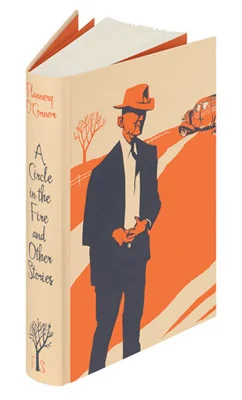The Drowned World
In a ghastly and beautiful world, at once decaying and teeming with tropical life forms, London lies half-submerged beneath a vast lagoon that reflects the glow of a swollen sun. The world’s fauna has returned to the Age of the Reptiles – mosquitoes the size of dragonflies, massive water-spiders and giant iguanas. The Ritz still stands, the monument to an almost-vanished civilisation, and in it is Kerans, a scientist producing futile biological reports. Holed up in a penthouse suite, witnessing the end of the hotel’s grand history, Kerans is coolly aware that his ‘odyssey’ of sinking cities will be the last phase of his own life too. Simultaneously he knows that his withdrawal from human company is the sign of a ‘careful preparation for a radically new environment’. Even his affair with the exquisite Beatrice Dahl – the only woman in the waterlogged capital – has the feel of an elegy, for he knows that ‘their only true meeting ground would be in their dreams’. As peculiar nightmares begin to afflict the world’s human survivors, his speculations prove only too prescient. In the events that follow, gleefully led by the diabolical Strangman – a white-suited, ‘half buccaneer, half devil’ – Kerans is drawn towards a lonely bid to maintain the new identity he has forged…
Jane Eyre
'Do you think I am an automaton? – a machine without feelings? … Do you think, because I am poor, obscure, plain, and little, I am soulless and heartless? You think wrong! – I have as much soul as you – and full as much heart!’ As compelling in character as she is ordinary in looks, Jane Eyre is one of literature’s greatest heroines. Hers is a captivating love story that encompasses, among other things, loss, deception, devotion and obsession. With themes of madness and forbidden knowledge, and a Byronic male lead – the glowering Rochester – Jane Eyre is also a suspenseful gothic mystery. Its sparse settings resemble those of Wuthering Heights; places which not only lend themselves to the novel’s psychological drama, but in which the air crackles and whispers with forces beyond human control. Read more...
Chaos: Making a New Science
James Gleick’s chronicle, written in 1987, reveals a fascinating world of fractals, strange attractors and smooth noodle maps. He captures the astonished determination of its pioneers and explores its exciting and sometimes startling impact on our quest for knowledge. Today it is understood that chaos is not opposed but integral to the two other revolutionary theories of the 20th century – relativity and quantum mechanics. Moreover, it is now known that chaos has a hand, not just in the workings of the world we inhabit, but in the wider universe: the sun, black holes, and even the big bang. As well as Gleick’s 2008 afterword, this edition features colour illustrations that visualise the intricate beauty of chaos theory.
A Circle in the Fire
‘His heart constricted with a repulsion for himself so clear and intense that he gasped for breath. He had stuffed his own emptiness with good works like a glutton.’ In ‘The Lame Shall Enter First’, one of the unforgettable stories in this collection, a widower realises that the charity of which he has been so indignantly proud was but a means of stifling his grief. The violent epiphany that seizes him comes too late – the tragedies wrought by self-delusion and hubris may, finally, be understood, but they may not always be repaired. This is the central theme of Flannery O’Connor’s coruscating, plain-speaking fiction: the painful, necessary salvation that emerges from catastrophic, life-changing, and sometimes life-ending, events…
The Postman Always Rings Twice
James M. Cain was sitting on a park bench by the White House in 1914 when a voice inside him said, ‘You’re going to be a writer.’ It was 20 years before his prediction came true, but his varied career as a singer, crime reporter and insurance man proved vital to his notorious first novel The Postman Always Rings Twice. Based on a real-life murder, it was an instant bestseller that inspired both fascination and outrage, and was banned in Boston for its plain-speaking portrayal of adultery and homicide. Today it is seen as one of the most important crime novels of the 20th century – translated into 18 languages and listed in the Modern Library’s 100 Best Novels. Described by the New York Times as a ‘six-minute egg’, it epitomises the hardboiled roman noir.





